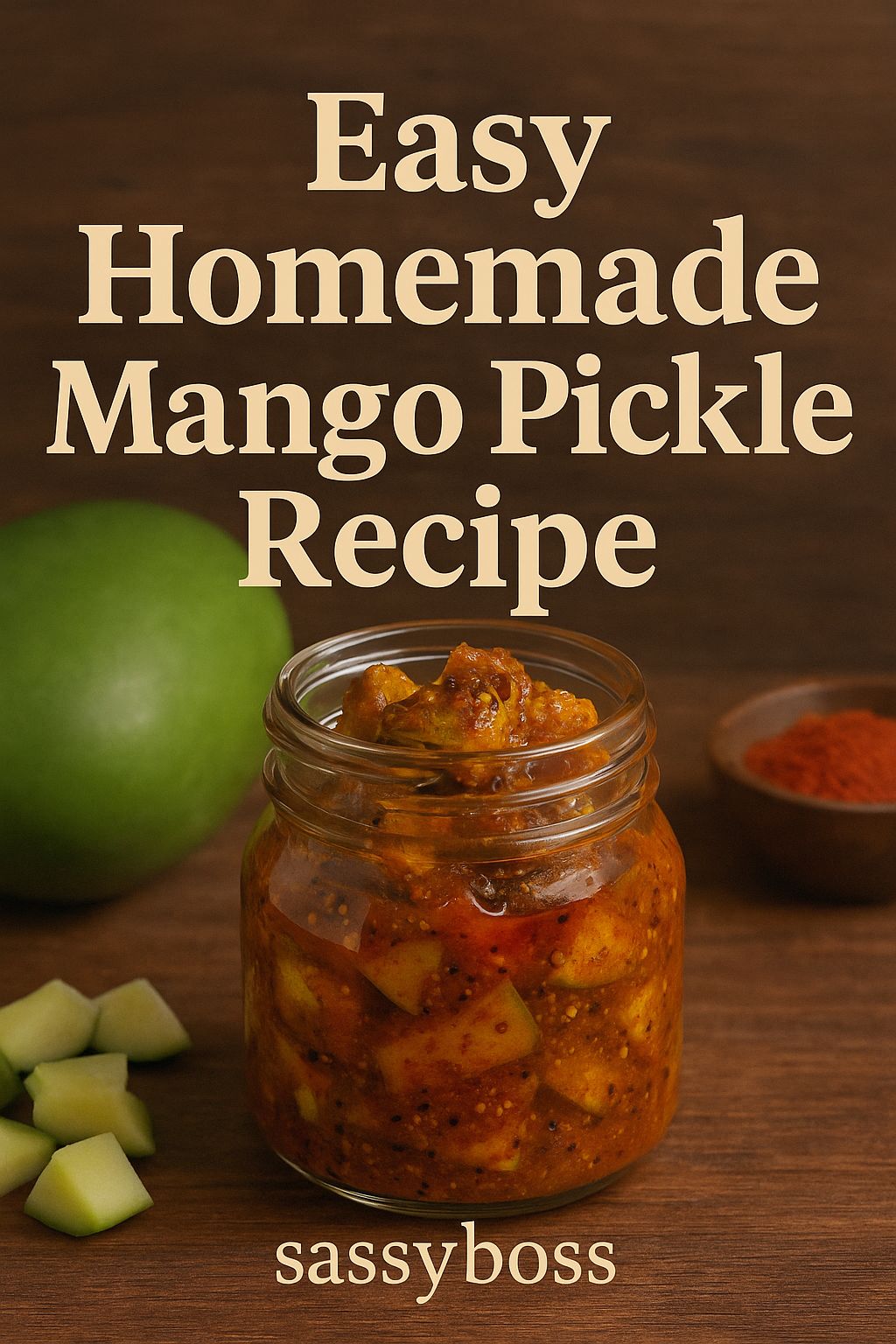Easy Homemade Mango Pickle Recipe – Step-by-Step
The perfume of mango pickle, which combines mustard oil, spices, and raw mangoes that absorb taste and sunlight, has a timeless quality. Summer is more than just a season in many Indian homes; it’s pickle-making season. The raw mango, the king of fruits, is at the center of it all. Today, I’ll show you how to make a simple, failsafe mango pickle that will appeal to both novices and seasoned eaters.
Mango pickle, also known as achaar, urugai, or loncha, is a mainstay of Indian cuisines and gives every dish a zesty, spicy kick.
#Why Make Mango Pickle at Home?
Pickles from the supermarket are handy, but nothing compares to the flavor and joy of handmade pickles. You have complete control over the ingredients, may change the amount of spice, and can stay away from preservatives. Additionally, pickle-making is a lovely custom that has been passed down through the centuries and helps us connect to our heritage.
Homemade mango pickle:
• Is free from artificial preservatives
• Tastes fresher and more authentic
• Can be customized to your liking
• Lasts several months when stored properly
#Types of Mango Pickle
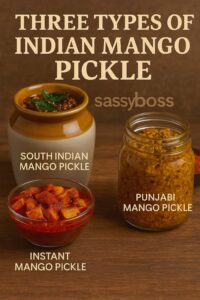
It’s important to note that there are numerous regional variations of mango pickle in India before we get started. This dish, which uses mustard oil, fenugreek, fennel, and other traditional spices, is a North Indian-style mango pickle. It has a lot of flavor and is spicy and tangy.
You can tweak this base recipe to make:
• Instant mango pickle (ready in a day)
• South Indian mango pickle (with sesame oil and curry leaves)
• Punjabi mango pickle (with extra mustard seeds and turmeric)
#Ingredients You’ll Need
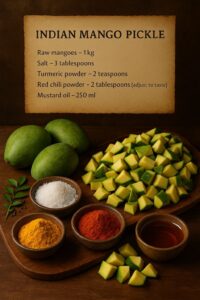
For this easy mango pickle recipe, you’ll need:
Main Ingredients:
• Raw mangoes – 1 kg (firm, unripe, and sour)
• Salt – 3 tablespoons
• Turmeric powder – 2 teaspoons
• Red chili powder – 2 tablespoons (adjust to taste)
• Mustard oil – 250 ml (cold-pressed for best flavor)
Whole Spices:
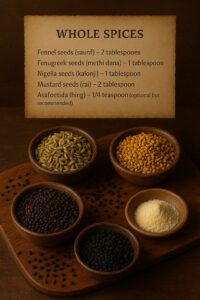
• Fennel seeds (saunf) – 2 tablespoons
• Fenugreek seeds (methi dana) – 1 tablespoon
• Nigella seeds (kalonji) – 1 tablespoon
• Mustard seeds (rai) – 2 tablespoons
• Asafoetida (hing) – 1/4 teaspoon (optional but recommended)
Tools:
• A clean glass jar or ceramic pickle jar (barni)
• A dry mixing bowl and spoon
• A muslin cloth (optional, for sun-drying)
#Step-by-Step Method
Step 1: Select and Prepare the Mangoes
:max_bytes(150000):strip_icc()/prepare-fresh-mango-3217514-step-01-e865d8adfe7d463ca58166b04bfc001d.jpg)
Start with firm, unripe mangoes. They should be sour and fibrous, perfect for pickling.
1. Wash the mangoes thoroughly.
2. Wipe them dry with a clean cloth — no moisture should remain.
3. Chop them into bite-sized pieces, preferably with the skin. Discard the seed.
Tip: If your mangoes are juicy, lightly salt and sun-dry them for 3–4 hours to reduce moisture. This helps preserve the pickle longer.
Step 2: Roast and Crush the Spices

Dry-roasting the spices enhances their aroma and prevents bitterness.
1. Lightly roast fennel, fenugreek, mustard, and nigella seeds in a pan for 2–3 minutes on low heat.
2. Let them cool, then coarsely crush using a mortar-pestle or blender. Keep some whole if you prefer texture.
Step 3: Mix Everything
In a large, dry bowl:
1. Add the chopped mango pieces.
2. Sprinkle turmeric, red chili powder, and salt.
3. Add the crushed spice mix and hing.
4. Mix everything thoroughly so that the mango pieces are well-coated.
Step 4: Add Mustard Oil
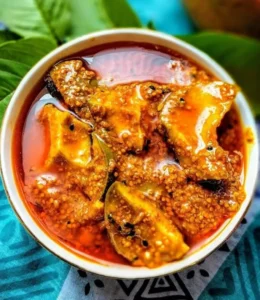
1. Heat mustard oil until it reaches smoking point (this removes its pungency).
2. Let it cool down slightly — it should be warm, not hot.
3. Pour it over the mango mixture and mix well.
The oil should coat the mangoes entirely and form a thin layer on top. This helps in preservation.
Step 5: Store and Sun-Dry
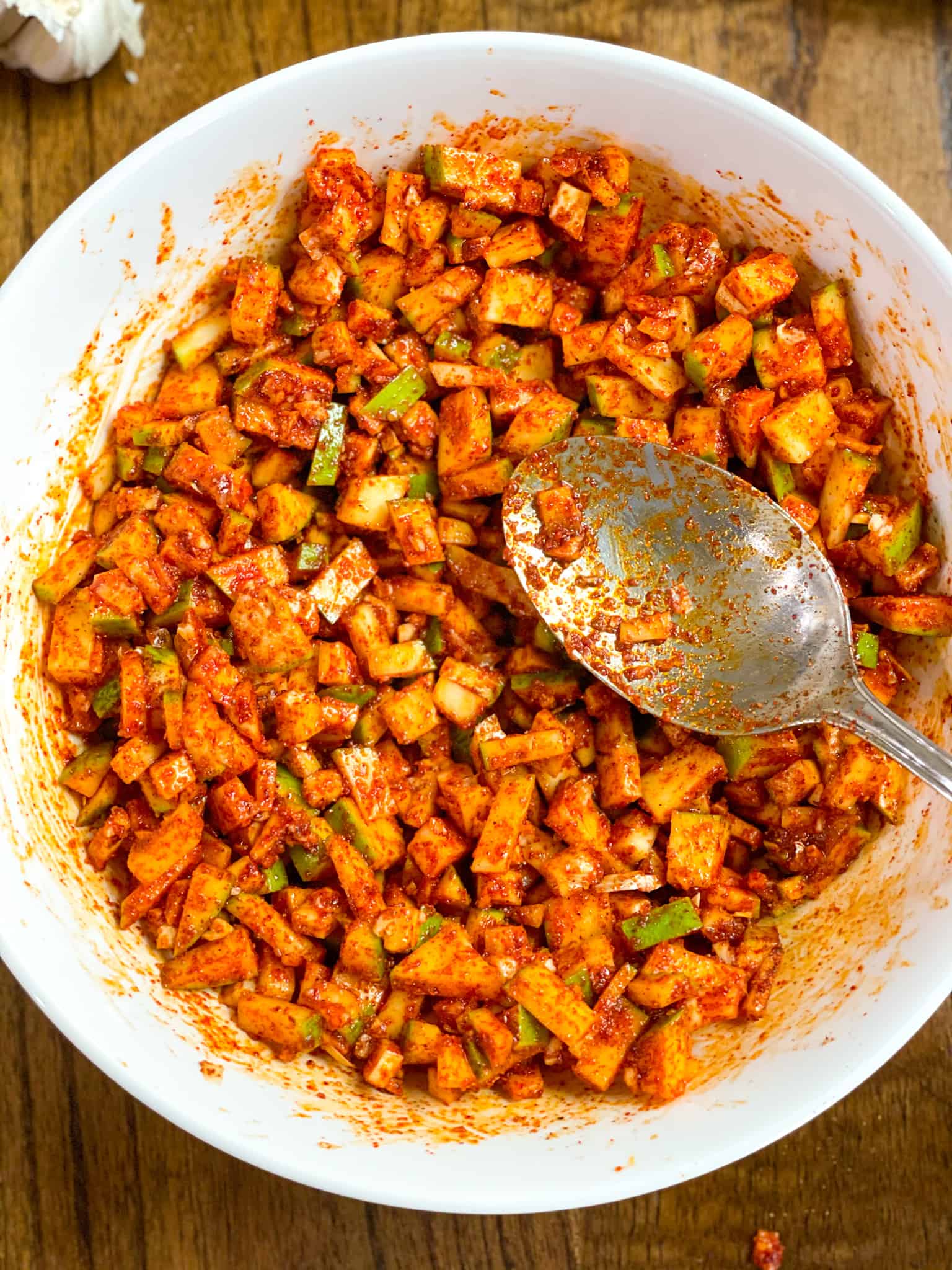
1. Transfer the mixture into a sterilized glass or ceramic jar.
2. Cover the mouth of the jar with a muslin cloth or a lid (loosely).
3. Place it in a sunny spot for 7–10 days, stirring the contents with a dry spoon every day.
The sunlight acts as a natural preservative and helps the spices infuse deeply into the mango pieces.
Step 6: Ready to Eat!
After about a week, your mango pickle will be ready to enjoy. It will continue to develop flavor over time and can last up to 6–12 months if stored in a cool, dry place.
#Serving Suggestions
Mango pickle is incredibly versatile and adds zing to almost anything. Try it with:
• Steamed rice and dal
• Parathas or theplas
• Curd rice
• Khichdi
• As a side for any Indian thali
Tips for Perfect Pickle
• Always use dry hands and spoons when handling the pickle to avoid spoilage.
• Store the pickle in sunlight for at least a few days if you live in a humid area.
• Use cold-pressed mustard oil for authentic flavor.
• If the oil layer seems low over time, add a bit more to cover the mango pieces completely.
Common FAQs
Q: Can I use olive or vegetable oil instead of mustard oil?
Technically yes, but mustard oil adds a distinctive flavor that defines North Indian pickles.
Q: Why did my pickle spoil?
Moisture, contaminated utensils, or insufficient oil are the main causes of spoiling. Always apply a layer of oil to the pickle and make sure all tools are thoroughly dry.
Q: Can I refrigerate the pickle?
Yes, though traditionally it’s stored at room temperature. Refrigeration can help extend shelf life in very humid climates.
Final Thoughts
Making pickles is a ritual, a memory, and a taste of home that goes beyond simple cuisine. Even beginners can enjoy making something delectable and incredibly traditional with this simple homemade mango pickle recipe.
You won’t use store-bought jars again after making it yourself. So feel free to preserve summer in a jar and savor the zesty, spicy treat throughout the year.
Have you tried making mango pickle at home? Share your version in the comments below!
